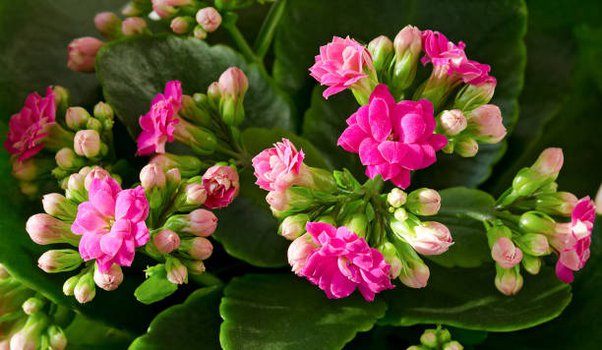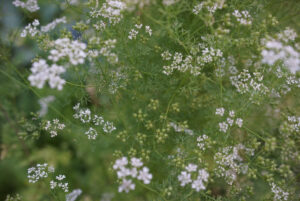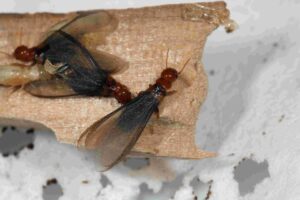
Flowers add an enchanting allure to gardens and landscapes, captivating the senses with their vibrant colors, intricate shapes, and delicate fragrances. Among the vast array of floral species, those that begin with the letter A hold a special fascination for gardeners and flower enthusiasts. In this article, we embark on a journey to explore some of the most exquisite flowers starting with the letter A, from the majestic amaryllis to the charming anemone.
Introduction to Flowers That Begin With the Letter A
A. Overview of Diverse Flower Species Flowers come in an astonishing variety of shapes, sizes, and colors, reflecting the rich tapestry of plant life found across the globe. Each flower species possesses unique characteristics that contribute to its beauty and appeal.
B. Significance of Floral Diversity in Gardens and Landscapes Floral diversity enhances the aesthetic appeal of gardens and landscapes, creating visual interest and attracting pollinators such as bees, butterflies, and hummingbirds. Different flower species offer distinct blooms, foliage textures, and growth habits, allowing for endless creative possibilities in garden design.
C. Exploration of Flowers Starting With the Letter A Flowers that begin with the letter A encompass a diverse range of botanical treasures, each with its own distinctive features and cultural significance. From showy bulbs to delicate perennials, these flowers captivate the imagination and inspire admiration for the wonders of nature.
Amaryllis
A. Description of Amaryllis Flowers
- Amaryllis flowers are renowned for their large, trumpet-shaped blooms and tall, sturdy stems. The flowers typically feature six petals arranged in a radial pattern, with colors ranging from vibrant reds and pinks to soft whites and pastels.
- The inflorescence of the amaryllis consists of a single flower per stem, making it a striking focal point in floral arrangements and indoor displays.
- In many cultures, amaryllis flowers symbolize beauty, love, and transformation, making them popular choices for special occasions such as weddings, birthdays, and holidays.
B. Cultivation and Care Tips 1. Amaryllis plants thrive in well-drained soil and bright, indirect sunlight. They should be planted with the upper third of the bulb above the soil surface and watered sparingly to avoid rot. 2. Bulbs can be propagated through offsets or seeds, with flowering typically occurring in late winter or early spring. Regular fertilization and adequate moisture are essential for healthy plant growth and blooming. 3. Amaryllis flowers are prized for their longevity and make stunning additions to floral arrangements, bouquets, and centerpieces. They can also be planted outdoors in garden beds or containers for seasonal color and charm.
C. Uses in Floral Arrangements and Landscaping 1. Amaryllis flowers add a touch of elegance and sophistication to floral bouquets and indoor displays, complementing a wide range of other blooms and foliage. 2. In landscaping, amaryllis bulbs can be planted in garden borders, raised beds, or containers to create dramatic focal points and vibrant color accents. 3. Pairing amaryllis with companion plants such as daffodils, tulips, and hyacinths can create stunning color combinations and visual contrasts in garden designs.
Azalea
A. Characteristics of Azalea Flowers
- Azalea flowers are renowned for their exquisite beauty and delicate fragrance, featuring clusters of small, trumpet-shaped blooms in a wide range of colors.
- The petals of azalea flowers can vary in shape and texture, with some varieties exhibiting ruffled edges or frilly accents. Bloom periods typically occur in spring or early summer, depending on the cultivar.
- Azaleas are prized for their versatility and adaptability to different climates, with numerous varieties available to suit varying garden conditions and aesthetic preferences.
B. Growing Requirements and Cultivation Tips 1. Azaleas prefer acidic, well-drained soil with a pH range of 4.5 to 6.0 and partial shade to filtered sunlight. They should be planted with the root ball slightly above the soil surface to ensure proper drainage. 2. Adequate moisture is essential for azaleas, especially during periods of drought or hot weather. Mulching around the base of the plants can help conserve soil moisture and regulate temperature fluctuations. 3. Pruning and shaping azalea shrubs can promote bushy growth and enhance flowering. Deadheading spent blooms and removing dead or diseased branches can also improve plant health and appearance.
C. Landscaping and Garden Design with Azaleas 1. Azaleas are prized for their versatility in landscaping, serving as foundation plants, hedge rows, or specimen shrubs in garden beds and borders. 2. Companion planting with other spring-blooming perennials and bulbs can create stunning color combinations and seasonal interest in garden designs. 3. Incorporating azaleas into woodland settings, shade gardens, or Asian-inspired landscapes can enhance the natural beauty and tranquility of outdoor spaces.
Aster
A. Description of Aster Flowers
- Aster flowers are known for their daisy-like blooms and abundant, star-shaped petals that radiate from a central disk. The inflorescence of the aster is composed of numerous tiny flowers clustered together in a dense, composite head.
- Asters come in a wide range of colors, including shades of blue, purple, pink, and white, with variations in petal size and arrangement. Bloom periods typically occur in late summer or fall, providing a burst of color in seasonal gardens.
- Asters are valued for their ecological importance as nectar sources for pollinators such as bees, butterflies, and beneficial insects, making them popular choices for wildlife-friendly landscapes and native plant gardens.
B. Growing Conditions and Care Requirements 1. Asters thrive in well-drained soil and full sunlight, although some varieties can tolerate partial shade. They should be planted at the same depth as they were in the nursery container and watered regularly to maintain soil moisture. 2. Deadheading spent blooms and dividing overcrowded clumps can promote continuous flowering and prevent the spread of disease. Asters may require staking or support in windy conditions to prevent stem breakage. 3. Pest and disease management strategies for asters include monitoring for aphids, powdery mildew, and aster yellows disease, as well as implementing cultural practices such as proper spacing and good air circulation.
C. Utilization in Gardens and Landscapes 1. Asters are valued for their versatility in garden design, serving as border plants, mass plantings, or focal points in mixed perennial beds. 2. Cut flower production of asters provides a sustainable source of blooms for floral arrangements, bouquets, and centerpieces, adding seasonal color and texture to indoor displays. 3. Planting asters in wildlife-friendly gardens or pollinator habitats can attract beneficial insects and support biodiversity, contributing to ecosystem health and resilience.
Anemone
A. Characteristics of Anemone Flowers
- Anemone flowers are characterized by their simple yet elegant beauty, featuring cup-shaped blooms with five to eight petals arranged in a radial pattern. The flowers can vary in color from pure white and soft pink to vibrant shades of purple, blue, and red.
- The petals of anemone flowers are often adorned with contrasting centers of dark stamens or colored stigmas, adding visual interest and allure to the blooms. Some varieties may exhibit double or semi-double flowers with extra petals for added fullness.
- Anemones have rich mythological symbolism and cultural associations, representing various themes such as love, anticipation, and protection. They are often used in bridal bouquets, wedding decorations, and other celebratory events to convey sentiments of happiness and good fortune.
B. Cultivation Tips and Growing Techniques 1. Anemones prefer moist, well-drained soil and partial shade to full sunlight, depending on the climate and growing conditions. They should be planted with the root ball slightly below the soil surface and watered regularly to maintain soil moisture. 2. Bulb planting depth and spacing guidelines vary depending on the species and cultivar, with larger bulbs requiring deeper planting depths and wider spacing to accommodate root growth. 3. Overwintering practices for perennial anemone varieties may include mulching with organic material or providing frost protection with row covers or garden fabric to insulate the plants from cold temperatures and frost damage.
C. Landscape Applications and Design Ideas 1. Anemones are prized for their versatility in garden design, serving as accent plants, border edgings, or ground covers in various landscape settings. 2. Planting anemones in rock gardens, alpine plantings, or container gardens can add charm and character to outdoor spaces, creating focal points and visual interest. 3. Companion plants for anemones include spring-blooming bulbs, such as daffodils, tulips, and hyacinths, as well as perennial flowers with similar growing requirements and aesthetic appeal.
Conclusion
Flowers that begin with the letter A encompass a diverse array of botanical treasures, each with its own unique charm, characteristics, and cultural significance. From the elegant amaryllis to the delicate anemone, these floral wonders enrich our lives with their beauty and symbolism, inspiring admiration and appreciation for the natural world. Whether adorning gardens, landscapes, or floral arrangements, A-list flowers captivate the imagination and remind us of the enduring allure of nature’s creations.


